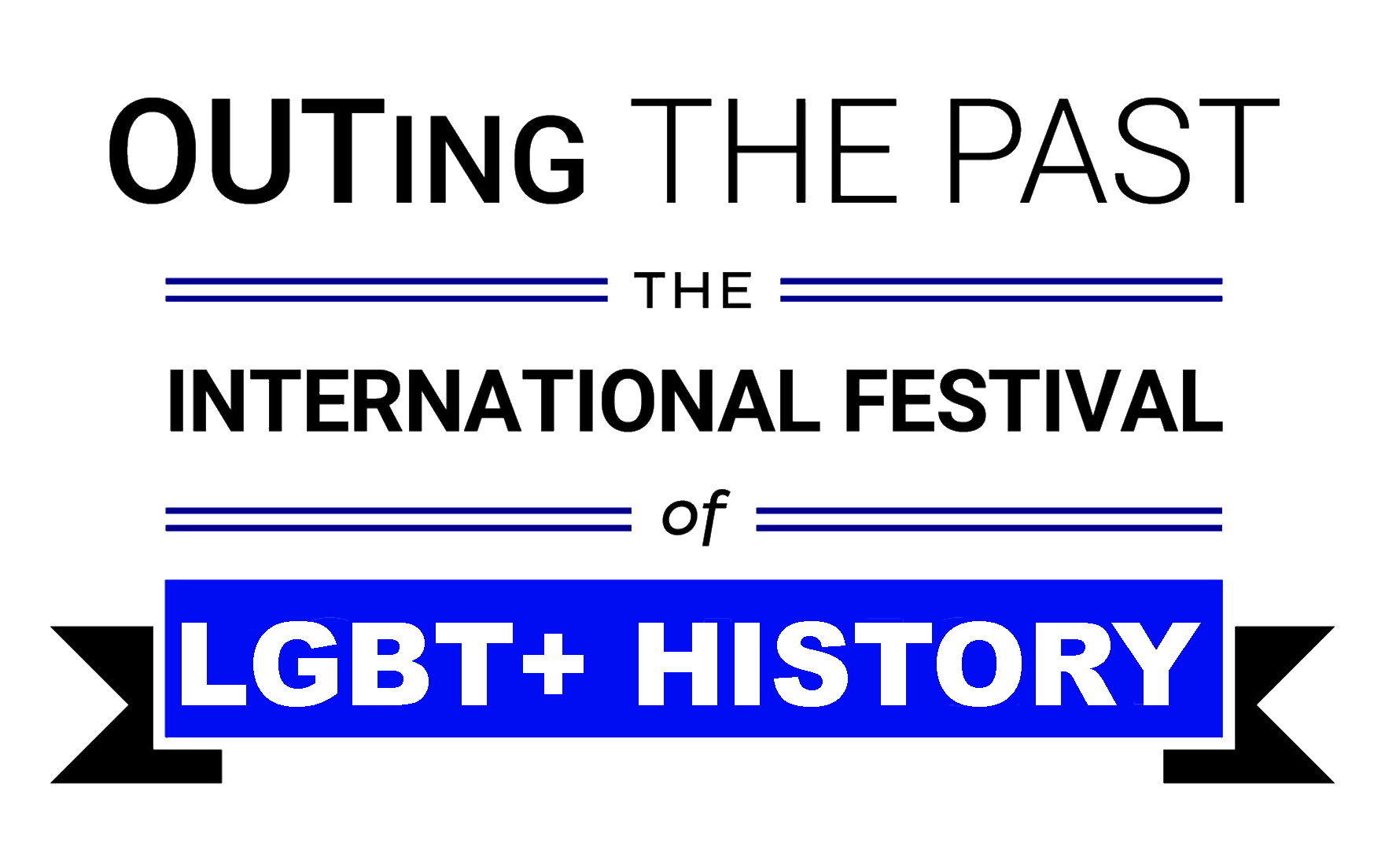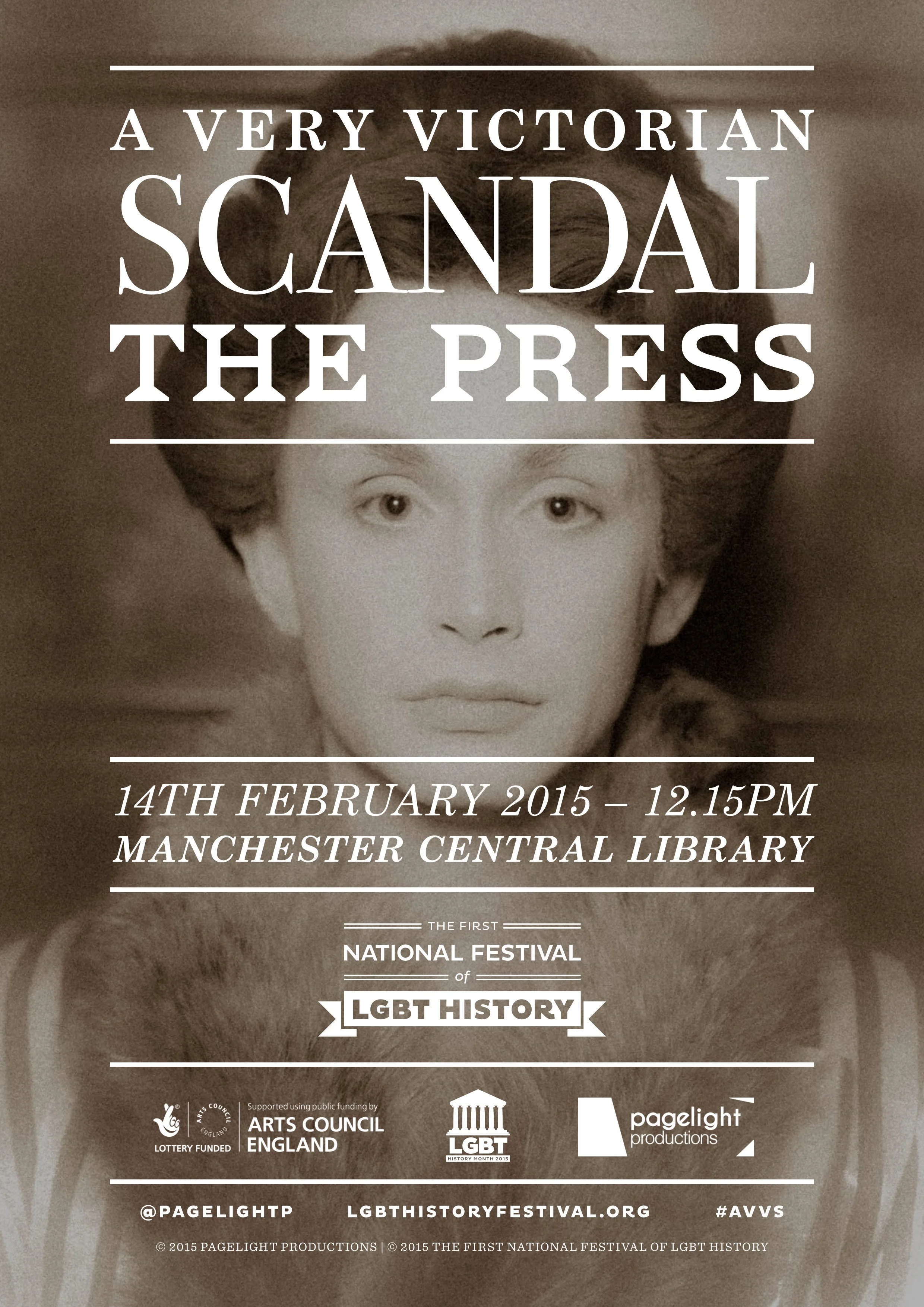Writing Festival Theatre: “A Very Victorian Scandal: The Press”
Stephen M Hornby looks back on writing “A Very Victorian Scandal: The Press”, the second in a trilogy of plays dramatising the Police raid on an all-male drag ball in Manchester in 1880.
GRAHAM EAGLESHAM AS WOODS AND MARK ROBERTS AS CAMINADA (LEFT TO RIGHT)
There were several elements to the puzzle: an ambitious man who wanted to become Chief Constable, an unprecedented press frenzy that spread across the world and a trial that never was. I was working through the papers that Jeff Evans, my historical adviser, had given me in search of a smoking gun, something to link all of these events together, beyond circumstance and suspicion.
In between the raid on the drag ball and the trial of the 47 men arrested a few days later, Chief Constable Pallin was replaced by Acting Chief Constable Wood (a man as keen on policing morality as he was on policing the streets). The story of the raid went from being covered by the local newspapers, to regionals, and on to nationals, with several illustrated special weekend editions covering the events, and eventually on to the American press. It was a sensation. Yet, when the men came to trial, no criminal charges were ever brought. They were bound over for a surety which some could pay and others could not, landing them in prison. In a sense, this was the real scandal of the whole episode. There had to be a smoking gun somewhere
I read the self-penned memoirs of the detective who led the raid, Jerome Caminada. The case was easily the biggest of his career in terms of press coverage it brought him. Despite two lengthy volumes of memoirs, some detailing relatively minor crimes, Caminada never mentions it once. Nor did he ever speak publicly about the case, despite retiring from the Police into a life in local politics. Was he deliberately choosing to remain silent about the love that dared not speak its name on moral grounds (he was a committed Catholic)?
DAN WALLACE AS PARKINSON AND GARETH GEORGE AS NEWMAN (LEFT TO RIGHT)
But then Caminada mentions, in some detail, other forms of sexual offending in his memoir and all kinds of (as he would see it) illegal and deviant behaviour. Was he perhaps ashamed of his role in some way? Had there been some connection between Caminada’s well-timed raid and the appointment of a new Chief Constable wanting to be known for his tough policing of sexual morality? The Manchester City Police had been informed of a similar ball some years earlier, but had taken no action. Was the imperative to act now being driven by an Acting Chief Constable keen to prove himself to a Watch Committee who wanted a crackdown on any perception of Manchester as a city of vice?
DAN WALLACE AS KITTY HEARTSTONE
If that was the case, and I had nothing yet to prove it was, then it was a monumental failure. The local press reporting of the raid could perhaps be relied upon. There is evidence of formal and informal connections between police forces and journalists at every level in the system. But the unexpected thing was the expediential growth in interest in the story.
I could imagine a Watch Committee that was pleased with a headline the day after the raid showing that Manchester showed no tolerance for men behaving indecently with each other. I could also readily imagine their horror when the story spread and spread, associating Manchester and unnatural vices for day after day after day across the North, then across England, then across the world. And their dread at anticipating the appearance of 47 men at Magistrates Court only to be remitted to Crown Court for lengthy trials which might mean the story went on for months and months. Was this why the case collapsed at Magistrates Court on the first and only hearing?
he raid had been a large and expensive and very public Police operation. There was the sworn evidence not just of the respected Caminada, but of other constables, all attesting to the depravity of the ball. But, in the end, no criminal charges were laid and the men were bound over. It was extraordinary. Had the Watch Committee now desperately tried to end the prosecution before any embarrassing trials could begin, which might mean detailed testimonies and a painfully prolonging of the scandal?
As I started writing, I had some key facts around the replacement of one Chief Constable with another, about a press appetite for the story that no one could control, about Caminada’s mysterious silence and about the perplexing puzzle of the trials that never were. I may not have the smoking gun, but I certainly had the bullets it has been loaded with.
GARETH GEORGE AS NEWMAN AND DAN WALLACE AS KITTY HEARTSTONE (LEFT TO RIGHT)
I choose to use Caminada and Wood as two of the three characters in the piece and play out the tensions of over the trial, Wood’s promotion and the control of the press between them. But I needed some way to bind those stories together and bring them into the action on stage in each scene. A journalist was the obvious choice for a third character. I invented Henry Newman as the embodiment of the new journalism that was emerging during the period, and made him the person who Caminada uses to first leak the raid story too. Newman, of course, had to be secretly homosexual. He is then faced with either printing the story of a lifetime and betraying people he knows, or not printing the story and potentially outing himself. This formed the basis of the first draft of “AVVS: The Press”.
The dramatist in me wanted to make the stakes for Newman even higher. I knew from the research that one of the men arrested, Ernest Parkinson, worked as a minstrel. What if Ernest was a female impersonator, Newman’s secret lover, and unbeknownst to Newman was at the ball? Now there were two biographical characters, one invented character and one character based on a real person, but with some invented biography.
I had a story that was three parts fact, two parts informed speculation and one part pure invention. That felt like the right balance to illuminate the issues of the police relationship with the press, whilst also conveying the story in a 30 minute piece with four actors in a library on a Saturday afternoon on St. Valentine ’s Day.
Photo credits: Nicolas Chinardet (except for poster image)
THE ORIGINAL POSTER FOR AVVS: THE PRESS (PHOTO CREDIT: DANIEL MEE)





